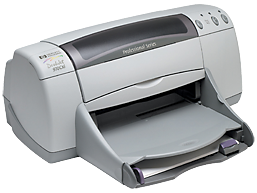Nova Panasat Ird 1110 Manual
Oct 21, 2013 Γεια χαρα παιδια.επεσε στα χερια μου ενας δεκτης Panasat ird 990.τι χρειαζεται για να. May 06, 2010 SBOX - NOVA Pansat IRD 1110. Este tema es sobre SBOX - NOVA Pansat IRD 1110 dentro de la seccion Sbox i have card for nova and receiver pansat IRD 1110 is not working. Nov 02, 2014 Panasat old IRD's (moved by MC Marietjie) Discussions. Panasat IRD 510, Panasat IRD 520. Spare decoders: SD PVR(2), PACE HD PVR 4T, DSD 660, 1110, 1131, Explora 1.


Hi all I'm Adrian, I'm a new guy that's just joined. I wish to meet people and get in touch with people who owned the very first decoders/IRDs that ever came out (back in 95/96). More specifically: Panasat Orbiter Alpha One/Two, Panasat IRD 510, Panasat IRD 520. These old boxes are very interesting to me, and I'd like to find out more about them. I have searched the web, but it is honestly futile as you can imagine, since this is so long ago. If there is still anyone who has one, has the original manuals, or still even remembers when these use to be in operation, I'd really like to chat with you. I wish to collect an example of these boxes too, so if you have one lying in box somewhere in your garage/attic, please let me know.
Kind regards, Adrian. Just something interesting about the old signal back in the day, the PAS 4 signal we used to get. I was in Swakopmund, Namibia a few years ago and there almost every house has two dishes on the wall - a regular, modern 60-90 cm dish, and next to it, a massive 1.8 m offset dish which almost engulfs the wall of the house!
So, doing some research, I found out that today they get IS20 (was IS7 when I was there) with a reasonably high signal strength and they've got a little dish like we do. But, in the 90's, the PAS 4 footprint was a lot more concentrated on South Africa itself and these guys had a low signal strength - and had to bolt these big monsters on the side of their houses just to get a reasonable signal. Could you imagine? Those were the days! R 7000 for a complete DSTV system, back then, a month's salary! Thank goodness for technology getting cheaper and more efficient over time, huh?
And if they had any sense, they would retain those large antennas anyway! The smaller antenna is not suitable on beam edge and Namibia is still largely covered by beam edge. I live in place and nothing will entice me to do away with the older antennas for these new toy antennas. And, the new little antennae were all rusted, while the big ones were fine! One of the 'advantages' of living next to the sea. Oh, and dish-shredding wind of course!
But, I think they are OK today, the beam edge is in mid-Angola somewhere, goes through Zambia and southern Malawi. But, back in those days, people in central Zimbabwe even, places like Harare, were struggling to get DSTV. Lagu Lagu Dangdut Koplo more. This was the initial deciding factor to bring out the now-defunct C-band Africa service in 1996. MC had a, licence only for RSA in the beginning, hence any cross border reception was technically 'illegal'. The PAS4 footprint was not a customised beam and the beam was centered to provide the best possible coverage over RSA. In any case, PAS4 was originally intended for use in 71 degrees E and not in 68.5. Ku band coverage over Africa, was pretty scarce in those days.
The only alternative was to use C band once MC were licensed to provide services in other countries. I was part of the team who travelled to Atlanta when the footprint for PAS7 and 10 was being developed. The target was to go as far North as possible and to limit the wastage of power illuminating the oceans.
BTW even a 1.8 m was then still pretty marginal for the Northern parts of Namibia. Xbmc Passion Repository Zip. Yes, that is true. I remember the horizontal PAS 4 beam shape was sort of 'oval' or elliptical and kind of covered South Africa mostly with a little spill over into our neighbours. The vertical beam was a little more banana-shaped (only slightly) but had spillage onto the Atlantic Ocean SW of Cape Town, but it had a bit of a 'bend' in it and was a little stronger in Zimbabwe.
Yes, you are right about the rights. Much of the time in 1996 and 1997, the SABC analogue channels were completely free-to-air and our neighbours were watching channels that only had a licence in South Africa! That's why DSTV had to eventually take over and encrypt the SABC channels in 1998. They became part of the digital package at the same time. But, the SABC analogue channels actually continued to run still after that even.